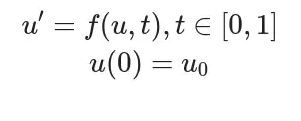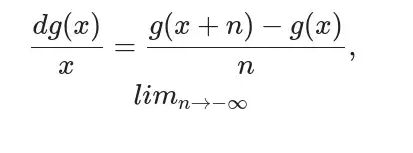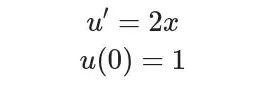- 本地部署deepseek-r1:14b 批量调用 Python调用本地deepseek-r1:14b实现对本地数据库的AI管理
朴拙Python交易猿
python数据库开发语言
这篇文章主要为大家详细介绍了Python如何基于DeepSeek模型,调用本地deepseek-r1:14b实现对本地数据库的AI管理场景描述基于DeepSeek模型,实现对本地数据库的AI管理。实现思路1、本地python+flask搭建个WEB,配置数据源。2、通过DeepSeek模型根据用户输入的文字需求,自动生成SQL语句。3、通过SQL执行按钮,实现对数据库的增删改查。模型服务方法1启动
- Matplotlib 柱形图
lly202406
开发语言
Matplotlib柱形图引言在数据可视化领域,柱形图是一种非常常见且强大的图表类型。它能够帮助我们直观地比较不同类别或组之间的数据大小。Matplotlib,作为Python中最受欢迎的数据可视化库之一,提供了丰富的绘图功能,其中包括创建柱形图。本文将详细介绍Matplotlib中的柱形图,包括其基本用法、高级特性以及如何进行优化。基本用法安装Matplotlib在开始使用Matplotlib之
- Matplotlib如何创建交互式图表?
EdgarBertram
matplotlib
Matplotlib是一个强大的Python绘图库,它可以用于生成高质量的静态图像。然而,Matplotlib同样支持创建交互式图表,这对于数据分析和可视化非常有用。交互式图表允许用户通过交互方式探索数据,例如缩放、平移或者查询数据点。下面我们将详细介绍如何使用Matplotlib创建交互式图表。一、安装与配置首先,确保你已经安装了Matplotlib库。你可以使用pip来安装:bash复制代码p
- 如何用PHP开发一个api数据接口
幽蓝计划
php
对于一个iOS开发者来说,我一直觉得会写接口是一件很酷的事情,因为它可以实时修改前台数据,而不像App一样需要更新版本和接受审核。更重要的是,它意味着你的技术完成了一个闭环,可以独自完成一整个项目的开发。PHP是我接触的第一个脚本语言,使用之后更是感觉PHP功能强大,开发过程非常友好方便,虽然之后也学习过Python、JavaScript等语言,但现在还是习惯使用PHP,下面就来介绍一下如何用PH
- 计算机视觉技术探索:美颜SDK如何利用深度学习优化美颜、滤镜功能?
美狐美颜sdk
美颜SDK美颜API直播美颜SDK计算机视觉深度学习直播美颜SDK美颜sdk第三方美颜sdk美颜api
时下,计算机视觉+深度学习正在重塑美颜技术,通过智能人脸检测、AI滤镜、深度美肤、实时优化等方式,让美颜效果更加自然、精准、个性化。那么,美颜SDK如何结合深度学习来优化美颜和滤镜功能?本文将深入解析AI在美颜技术中的应用,并探讨其未来发展趋势。一、深度学习如何赋能美颜SDK?1.AI人脸检测与关键点识别:精准捕捉五官在美颜过程中,首先需要精准检测人脸位置和五官特征点,确保美颜效果不会失真。深度学
- 使用E2B数据分析沙盒进行文件分析
qahaj
数据分析数据挖掘python
使用E2B数据分析沙盒进行文件分析在现代数据分析中,运行环境的安全性与灵活性是确保数据处理高效可靠的关键因素。E2B提供了一个数据分析沙盒,能够在隔离的环境中安全地执行代码,非常适合构建诸如代码解释器或类似于ChatGPT的高级数据分析工具。在这篇文章中,我将演示如何使用E2B的数据分析沙盒来对上传的文件进行分析,为您提供一个强大的Python代码示例。核心原理解析E2B的数据分析沙盒为开发者提供
- Python笔记——DeprecationWarning
小橘猫cate
Pythonpython开发语言
定义如下阶跃函数时出现警告,defstep_function(x):returnnp.array(x>0,dtype=np.int)DeprecationWarning:`np.int`isadeprecatedaliasforthebuiltin`int`.Tosilencethiswarning,use`int`byitself.Doingthiswillnotmodifyanybehavio
- 使用 ArcGIS 和 Python 进行地理信息系统(GIS)分析
scaFHIO
arcgispythonjava
在本篇文章中,我们将探讨如何利用ArcGIS和Python进行地理信息系统(GIS)分析。ArcGIS是由Esri开发和维护的一系列GIS软件,包括客户端、服务器和在线解决方案。本文主要聚焦于如何使用Python和arcgis库来实现GIS功能。技术背景介绍ArcGIS提供了功能强大的工具来进行矢量和栅格分析、地理编码、地图制作以及路线和路径规划。通过arcgisPython库,我们可以访问Esr
- DeprecationWarning: 无效的转义序列‘\/‘解决方案
数据科学智慧
linux运维服务器Python
DeprecationWarning:无效的转义序列’/'解决方案在Python编程中,您可能会遇到"DeprecationWarning:无效的转义序列’/'"的警告消息。这个警告通常在您尝试使用无效的转义序列时出现,例如在正则表达式或字符串中。本文将为您提供解决方案,以解决这个问题。首先,让我们了解一下转义序列的概念。在Python中,某些字符前面带有反斜杠(\),以表示特殊含义,例如换行符(
- 深度学习模型性能全景评估与优化指南
niuTaylor
深度学习人工智能
深度学习模型性能全景评估与优化指南一、算力性能指标体系1.核心算力指标对比指标计算方式适用场景硬件限制TOPS(TeraOperationsPerSecond)每秒万亿次整数运算量化模型推理NVIDIAJetsonNano仅支持FP16/FP32TFLOPS(TeraFLoating-pointOPerationsperSecond)TFLOPS=Cores×FLOPs/Cycle×Frequen
- python做飞机大战让敌机打子弹_python(pygame)滑稽大战(类似飞机大战) 教程
青云若水
初始准备工作本项目使用的python3版本(如果你用python2,我不知会怎么样)Ide推荐大家选择pycharm(不同ide应该没影响)需要安装第三方库pygame,pygame安装方法(windows电脑,mac系统本人实测与pygame不兼容,强行运行本项目卡成ppt)电脑打开cmd命令窗口,输入pip3installpygame补充说明:由于众所周知的原因,安装过程中下载可能十分缓慢,甚
- 利用Python和深度学习方法实现手写数字识别的高精度解决方案——从数据预处理到模型优化的全流程解析
快撑死的鱼
Python算法精解python深度学习开发语言
利用Python和深度学习方法实现手写数字识别的高精度解决方案——从数据预处理到模型优化的全流程解析在人工智能的众多应用领域中,手写数字识别是一项经典且具有重要实际应用价值的任务。随着深度学习技术的飞速发展,通过构建和训练神经网络模型,手写数字识别的精度已经可以达到99%以上。本文将以Python为主要编程语言,结合深度学习的核心技术,详细解析手写数字识别的实现过程,并探讨如何进一步优化模型以提高
- python之连连看游戏
CrMylive.
python游戏pygame
实现一个简单的连连看游戏需要用到pygame库和一些基本的数据结构和算法。导入pygame库在程序开始之前,首先需要导入pygame库。在Python中,可以使用以下代码导入pygame库:importpygame初始化Pygame在导入pygame库之后,需要使用以下代码初始化pygame:pygame.init()设置游戏窗口设置游戏窗口的大小、标题等属性。可以使用以下代码设置游戏窗口大小为6
- Python, Java, C ++开发全球热能动态监测APP
Geeker-2025
pythonjavac++
开发一个“全球热能动态监测APP”是一个非常有意义的想法,尤其是在能源管理和环境保护领域。以下是开发该APP的详细思路和技术实现方案,分别针对Python、Java和C++。---###**功能需求分析**1.**全球热能数据展示**:-各国或地区的热能生产、消费和进出口数据。-实时监测热能动态(如发电厂的热能输出、温度变化等)。2.**地图可视化**:-在地图上标注热能发电厂的位置。-使用颜色或
- 强化学习中的深度卷积神经网络设计与应用实例
数字扫地僧
计算机视觉cnn人工智能神经网络
I.引言强化学习(ReinforcementLearning,RL)是机器学习的一个重要分支,通过与环境的交互来学习最优策略。深度学习,特别是深度卷积神经网络(DeepConvolutionalNeuralNetworks,DCNNs)的引入,为强化学习在处理高维度数据方面提供了强大工具。本文将探讨强化学习中深度卷积神经网络的设计原则及其在不同应用场景中的实例。II.深度卷积神经网络在强化学习中的
- 动物识别系统代码python_动物识别系统__代码
weixin_39812065
动物识别系统代码python
1动物识别专家系统动物识别专家系统是流行的专家系统实验模型,它用产生式规则来表示知识,共15条规则、可以识别七种动物,这些规则既少又简单,可以改造他们,也可以加进新的规则,还可以用来识别其他东西的新规则来取代这些规则。动物识别15条规则的中文表示是:规则1:如果:动物有毛发则:该动物是哺乳动物规则2:如果:动物有奶则:该单位是哺乳动物规则3:如果:该动物有羽毛则:该动物是鸟规则4:如果:动物会飞,
- 动物识别系统代码python_动物识别系统代码
weixin_39862794
动物识别系统代码python
简易动物识别专家系统源代码(调试无错!)#includevoidbirds(){inta;printf("**************************************\n");printf("1.长腿,长脖子,黑色,不会飞。\n");printf("2.不会飞,会游泳,黑色.\n");printf("3.善飞\n");printf("4.无上述特征\n");printf("****
- Python深浅拷贝
Karl_zhujt
Pythonpython
文章目录1概述2数据类型2.1可变类型2.2不可变类型3深浅拷贝3.1浅拷贝3.2深拷贝4深浅拷贝对数据类型的影响4.1对于不可变类型的影响4.2对于可变类型的影响4.3总结5实现机制5.1copy5.2id6示例6.1普通赋值6.2浅拷贝可变类型6.3浅拷贝不可变类型6.4深拷贝可变类型6.5深拷贝不可变类型7注意事项1概述在Python中,可变类型和不可变类型的拷贝行为有所不同。理解它们的区别
- 基于 EMA12 指标结合 iTick 外汇报价 API 、股票报价API、指数报价API的量化策略编写与回测
iTick提供了强大的外汇报价API、股票报价API和指数报价API服务,为量化策略的开发提供了丰富的数据支持。本文将详细介绍如何使用Python结合EMA12指标和iTick的报价API来构建一个简单的量化交易策略,并对该策略进行回测。1.引言在量化交易领域,技术指标是构建交易策略的重要基础。iTick提供了强大的外汇报价API、股票报价API和指数报价API服务,为量化策略的开发提供了丰富的数
- 腾讯云大模型知识引擎与DeepSeek:打造懒人专属的谷歌浏览器翻译插件
大富大贵7
程序员知识储备1程序员知识储备2程序员知识储备3腾讯云云计算
摘要:随着人工智能技术的飞速发展,越来越多的前沿技术和工具已走入日常生活。翻译工具作为跨语言沟通的桥梁,一直处于技术创新的风口浪尖。本文探讨了腾讯云大模型知识引擎与DeepSeek结合谷歌浏览器插件的可能性,旨在为用户提供一种便捷、高效的翻译体验。通过应用深度学习、自然语言处理和知识图谱技术,该插件不仅能实时翻译网页内容,还能根据上下文进行智能推荐,实现精准的语境转换。本文将详细阐述其设计思路、技
- python动物识别系统(仅有识别功能)
OnlySecondS
''@Time:2022/03/298:39@Author:11863@File:AIS_main.py@software:PyCharm'''rules={}#以字典形式存储#读取文件defreadRules():rulesFile=open("rules.txt","r",encoding='utf-8')forlineinrulesFile:#按行读取line=line.replace('I
- 深度优先搜索和广度优先搜索详细解析和区别
潇杨爱吃粉
深度优先宽度优先算法数据结构
一、深度优先搜索(DFS)1.核心思想像探险家走迷宫,遇到岔路就选一条路走到头,无路可走时返回上一个岔路口换另一条路。2.实现方式数据结构:栈(Stack,先进后出)或递归(隐式栈)遍历顺序:纵向深入,优先访问最深层的节点3.图解示例假设有以下树结构:A/\BC/\/DEFDFS遍历顺序(从根节点A出发):A→B→D→E→C→F4.代码实现(Python)defdfs(graph,start):s
- DeepSeek 模型未来怎么走?技术创新、行业落地全解析!
网罗开发
AI大模型人工智能人工智能职场和发展
网罗开发(小红书、快手、视频号同名) 大家好,我是展菲,目前在上市企业从事人工智能项目研发管理工作,平时热衷于分享各种编程领域的软硬技能知识以及前沿技术,包括iOS、前端、HarmonyOS、Java、Python等方向。在移动端开发、鸿蒙开发、物联网、嵌入式、云原生、开源等领域有深厚造诣。图书作者:《ESP32-C3物联网工程开发实战》图书作者:《SwiftUI入门,进阶与实战》超级个体:CO
- Python-modbustcp通信-plc读写
张凯的工作室
pythonpython
Python-modbustcp通信-plc读写1,功能码说明读取:%m对应READ_COILS线圈寄存器数值0和1%mw存单字节%mf浮点数%md双字节对应READ_HOLDING_REGISTERS保持寄存器写入单个写入线圈寄存器WRITE_SINGLE_COIL%m单个写入保持寄存器WRITE_SINGLE_REGISTER写入多个保持寄存器WRITE_MULTIPLE_REGISTERS写
- PyCharm v2024.3.5 强大的Python IDE工具 支持M、Intel芯片
2401_89264762
pythonidepycharm
PyCharm是一种PythonIDE,带有一整套可以帮助用户在使用Python语言开发时提高其效率的工具,比如调试、语法高亮、Project管理、代码跳转、智能提示、自动完成、单元测试、版本控制。此外,该IDE提供了一些高级功能,以用于支持Django框架下的专业Web开发。应用介绍PyCharm是由JetBrains打造的一款PythonIDE,VS2010的重构插件Resharper就是出自
- 免费界面库 python_一个非常简单好用的Python图形界面库(PysimpleGUI)
不妧
免费界面库python
前一阵,我在为朋友编写一个源代码监控程序的时候,发现了一个Python领域非常简单好用的图形界面库。说起图形界面库,你可能会想到TkInter、PyQt、PyGUI等流行的图形界面库,我也曾经尝试使用,一个很直观的感受就是,这太难用了。就去网上搜搜,看看有没有一些demo,拿来改改,结果很少有,当时我就放弃了这些图形库的学习,转而使用了vue+flask的形式以浏览器网页作为程序界面,因为我会这个
- Python 网络爬虫:从入门到实践
一ge科研小菜菜
编程语言Pythonpython
个人主页:一ge科研小菜鸡-CSDN博客期待您的关注网络爬虫是一种自动化的程序,用于从互联网上抓取数据。Python以其强大的库和简单的语法,是开发网络爬虫的绝佳选择。本文将详细介绍Python网络爬虫的基本原理、开发工具、常用框架以及实践案例。一、网络爬虫的基本原理网络爬虫的工作流程通常包括以下步骤:发送请求:向目标网站发送HTTP请求,获取网页内容。解析内容:提取需要的数据,可以是HTML标签
- PySimpleGUI 4.60.5
孔帆贝
PySimpleGUI4.60.5【下载地址】PySimpleGUI4.60.5**PySimpleGUI**是一款专为简化PythonGUI(图形用户界面)编程而生的库。该库设计宗旨在于通过提供简洁、易懂的API接口,使开发者能够以更快的速度和更少的代码量创建出美观实用的应用程序。对于无论是GUI编程新手还是寻求快速开发工具的老手来说,PySimpleGUI都是一个极具吸引力的选择。其通过封装了
- 《今日AI-人工智能-编程日报》-源自2025年3月19日
小亦编辑部
每日AI-人工智能-编程日报人工智能
1.豆包AI编程功能迎来三项重磅升级豆包平台今日宣布其AI编程功能迎来三项重要升级,包括:HTML实时预览:支持用户在编写HTML代码时实时查看网页效果,显著提升前端开发效率,尤其适用于小游戏和网页制作。Python代码直接运行与一键修复:用户可直接运行Python代码,并在出错时一键修复,极大降低了编程门槛,提升了开发效率。生成完整项目:新增生成完整项目的功能,帮助用户快速创建应用程序,缩短开发
- python PySimpleGUI 使用
Seeklike
python
#PySimpleGUI库快速简单构建一个gui窗口#PySimpleGUI是一个用于简化GUI编程的Python包,它封装了多种底层GUI框架(如tkinter、Qt、WxPython等),提供了简单易用的API。#PySimpleGUI包含了大量的控件(也称为小部件或组件),这些控件可以帮助你快速构建用户界面#导包importPySimpleGUIassgimportcv2importkeyb
- ASM系列五 利用TreeApi 解析生成Class
lijingyao8206
ASM字节码动态生成ClassNodeTreeAPI
前面CoreApi的介绍部分基本涵盖了ASMCore包下面的主要API及功能,其中还有一部分关于MetaData的解析和生成就不再赘述。这篇开始介绍ASM另一部分主要的Api。TreeApi。这一部分源码是关联的asm-tree-5.0.4的版本。
在介绍前,先要知道一点, Tree工程的接口基本可以完
- 链表树——复合数据结构应用实例
bardo
数据结构树型结构表结构设计链表菜单排序
我们清楚:数据库设计中,表结构设计的好坏,直接影响程序的复杂度。所以,本文就无限级分类(目录)树与链表的复合在表设计中的应用进行探讨。当然,什么是树,什么是链表,这里不作介绍。有兴趣可以去看相关的教材。
需求简介:
经常遇到这样的需求,我们希望能将保存在数据库中的树结构能够按确定的顺序读出来。比如,多级菜单、组织结构、商品分类。更具体的,我们希望某个二级菜单在这一级别中就是第一个。虽然它是最后
- 为啥要用位运算代替取模呢
chenchao051
位运算哈希汇编
在hash中查找key的时候,经常会发现用&取代%,先看两段代码吧,
JDK6中的HashMap中的indexFor方法:
/**
* Returns index for hash code h.
*/
static int indexFor(int h, int length) {
- 最近的情况
麦田的设计者
生活感悟计划软考想
今天是2015年4月27号
整理一下最近的思绪以及要完成的任务
1、最近在驾校科目二练车,每周四天,练三周。其实做什么都要用心,追求合理的途径解决。为
- PHP去掉字符串中最后一个字符的方法
IT独行者
PHP字符串
今天在PHP项目开发中遇到一个需求,去掉字符串中的最后一个字符 原字符串1,2,3,4,5,6, 去掉最后一个字符",",最终结果为1,2,3,4,5,6 代码如下:
$str = "1,2,3,4,5,6,";
$newstr = substr($str,0,strlen($str)-1);
echo $newstr;
- hadoop在linux上单机安装过程
_wy_
linuxhadoop
1、安装JDK
jdk版本最好是1.6以上,可以使用执行命令java -version查看当前JAVA版本号,如果报命令不存在或版本比较低,则需要安装一个高版本的JDK,并在/etc/profile的文件末尾,根据本机JDK实际的安装位置加上以下几行:
export JAVA_HOME=/usr/java/jdk1.7.0_25
- JAVA进阶----分布式事务的一种简单处理方法
无量
多系统交互分布式事务
每个方法都是原子操作:
提供第三方服务的系统,要同时提供执行方法和对应的回滚方法
A系统调用B,C,D系统完成分布式事务
=========执行开始========
A.aa();
try {
B.bb();
} catch(Exception e) {
A.rollbackAa();
}
try {
C.cc();
} catch(Excep
- 安墨移动广 告:移动DSP厚积薄发 引领未来广 告业发展命脉
矮蛋蛋
hadoop互联网
“谁掌握了强大的DSP技术,谁将引领未来的广 告行业发展命脉。”2014年,移动广 告行业的热点非移动DSP莫属。各个圈子都在纷纷谈论,认为移动DSP是行业突破点,一时间许多移动广 告联盟风起云涌,竞相推出专属移动DSP产品。
到底什么是移动DSP呢?
DSP(Demand-SidePlatform),就是需求方平台,为解决广 告主投放的各种需求,真正实现人群定位的精准广
- myelipse设置
alafqq
IP
在一个项目的完整的生命周期中,其维护费用,往往是其开发费用的数倍。因此项目的可维护性、可复用性是衡量一个项目好坏的关键。而注释则是可维护性中必不可少的一环。
注释模板导入步骤
安装方法:
打开eclipse/myeclipse
选择 window-->Preferences-->JAVA-->Code-->Code
- java数组
百合不是茶
java数组
java数组的 声明 创建 初始化; java支持C语言
数组中的每个数都有唯一的一个下标
一维数组的定义 声明: int[] a = new int[3];声明数组中有三个数int[3]
int[] a 中有三个数,下标从0开始,可以同过for来遍历数组中的数
- javascript读取表单数据
bijian1013
JavaScript
利用javascript读取表单数据,可以利用以下三种方法获取:
1、通过表单ID属性:var a = document.getElementByIdx_x_x("id");
2、通过表单名称属性:var b = document.getElementsByName("name");
3、直接通过表单名字获取:var c = form.content.
- 探索JUnit4扩展:使用Theory
bijian1013
javaJUnitTheory
理论机制(Theory)
一.为什么要引用理论机制(Theory)
当今软件开发中,测试驱动开发(TDD — Test-driven development)越发流行。为什么 TDD 会如此流行呢?因为它确实拥有很多优点,它允许开发人员通过简单的例子来指定和表明他们代码的行为意图。
TDD 的优点:
&nb
- [Spring Data Mongo一]Spring Mongo Template操作MongoDB
bit1129
template
什么是Spring Data Mongo
Spring Data MongoDB项目对访问MongoDB的Java客户端API进行了封装,这种封装类似于Spring封装Hibernate和JDBC而提供的HibernateTemplate和JDBCTemplate,主要能力包括
1. 封装客户端跟MongoDB的链接管理
2. 文档-对象映射,通过注解:@Document(collectio
- 【Kafka八】Zookeeper上关于Kafka的配置信息
bit1129
zookeeper
问题:
1. Kafka的哪些信息记录在Zookeeper中 2. Consumer Group消费的每个Partition的Offset信息存放在什么位置
3. Topic的每个Partition存放在哪个Broker上的信息存放在哪里
4. Producer跟Zookeeper究竟有没有关系?没有关系!!!
//consumers、config、brokers、cont
- java OOM内存异常的四种类型及异常与解决方案
ronin47
java OOM 内存异常
OOM异常的四种类型:
一: StackOverflowError :通常因为递归函数引起(死递归,递归太深)。-Xss 128k 一般够用。
二: out Of memory: PermGen Space:通常是动态类大多,比如web 服务器自动更新部署时引起。-Xmx
- java-实现链表反转-递归和非递归实现
bylijinnan
java
20120422更新:
对链表中部分节点进行反转操作,这些节点相隔k个:
0->1->2->3->4->5->6->7->8->9
k=2
8->1->6->3->4->5->2->7->0->9
注意1 3 5 7 9 位置是不变的。
解法:
将链表拆成两部分:
a.0-&
- Netty源码学习-DelimiterBasedFrameDecoder
bylijinnan
javanetty
看DelimiterBasedFrameDecoder的API,有举例:
接收到的ChannelBuffer如下:
+--------------+
| ABC\nDEF\r\n |
+--------------+
经过DelimiterBasedFrameDecoder(Delimiters.lineDelimiter())之后,得到:
+-----+----
- linux的一些命令 -查看cc攻击-网口ip统计等
hotsunshine
linux
Linux判断CC攻击命令详解
2011年12月23日 ⁄ 安全 ⁄ 暂无评论
查看所有80端口的连接数
netstat -nat|grep -i '80'|wc -l
对连接的IP按连接数量进行排序
netstat -ntu | awk '{print $5}' | cut -d: -f1 | sort | uniq -c | sort -n
查看TCP连接状态
n
- Spring获取SessionFactory
ctrain
sessionFactory
String sql = "select sysdate from dual";
WebApplicationContext wac = ContextLoader.getCurrentWebApplicationContext();
String[] names = wac.getBeanDefinitionNames();
for(int i=0; i&
- Hive几种导出数据方式
daizj
hive数据导出
Hive几种导出数据方式
1.拷贝文件
如果数据文件恰好是用户需要的格式,那么只需要拷贝文件或文件夹就可以。
hadoop fs –cp source_path target_path
2.导出到本地文件系统
--不能使用insert into local directory来导出数据,会报错
--只能使用
- 编程之美
dcj3sjt126com
编程PHP重构
我个人的 PHP 编程经验中,递归调用常常与静态变量使用。静态变量的含义可以参考 PHP 手册。希望下面的代码,会更有利于对递归以及静态变量的理解
header("Content-type: text/plain");
function static_function () {
static $i = 0;
if ($i++ < 1
- Android保存用户名和密码
dcj3sjt126com
android
转自:http://www.2cto.com/kf/201401/272336.html
我们不管在开发一个项目或者使用别人的项目,都有用户登录功能,为了让用户的体验效果更好,我们通常会做一个功能,叫做保存用户,这样做的目地就是为了让用户下一次再使用该程序不会重新输入用户名和密码,这里我使用3种方式来存储用户名和密码
1、通过普通 的txt文本存储
2、通过properties属性文件进行存
- Oracle 复习笔记之同义词
eksliang
Oracle 同义词Oracle synonym
转载请出自出处:http://eksliang.iteye.com/blog/2098861
1.什么是同义词
同义词是现有模式对象的一个别名。
概念性的东西,什么是模式呢?创建一个用户,就相应的创建了 一个模式。模式是指数据库对象,是对用户所创建的数据对象的总称。模式对象包括表、视图、索引、同义词、序列、过
- Ajax案例
gongmeitao
Ajaxjsp
数据库采用Sql Server2005
项目名称为:Ajax_Demo
1.com.demo.conn包
package com.demo.conn;
import java.sql.Connection;import java.sql.DriverManager;import java.sql.SQLException;
//获取数据库连接的类public class DBConnec
- ASP.NET中Request.RawUrl、Request.Url的区别
hvt
.netWebC#asp.nethovertree
如果访问的地址是:http://h.keleyi.com/guestbook/addmessage.aspx?key=hovertree%3C&n=myslider#zonemenu那么Request.Url.ToString() 的值是:http://h.keleyi.com/guestbook/addmessage.aspx?key=hovertree<&
- SVG 教程 (七)SVG 实例,SVG 参考手册
天梯梦
svg
SVG 实例 在线实例
下面的例子是把SVG代码直接嵌入到HTML代码中。
谷歌Chrome,火狐,Internet Explorer9,和Safari都支持。
注意:下面的例子将不会在Opera运行,即使Opera支持SVG - 它也不支持SVG在HTML代码中直接使用。 SVG 实例
SVG基本形状
一个圆
矩形
不透明矩形
一个矩形不透明2
一个带圆角矩
- 事务管理
luyulong
javaspring编程事务
事物管理
spring事物的好处
为不同的事物API提供了一致的编程模型
支持声明式事务管理
提供比大多数事务API更简单更易于使用的编程式事务管理API
整合spring的各种数据访问抽象
TransactionDefinition
定义了事务策略
int getIsolationLevel()得到当前事务的隔离级别
READ_COMMITTED
- 基础数据结构和算法十一:Red-black binary search tree
sunwinner
AlgorithmRed-black
The insertion algorithm for 2-3 trees just described is not difficult to understand; now, we will see that it is also not difficult to implement. We will consider a simple representation known
- centos同步时间
stunizhengjia
linux集群同步时间
做了集群,时间的同步就显得非常必要了。 以下是查到的如何做时间同步。 在CentOS 5不再区分客户端和服务器,只要配置了NTP,它就会提供NTP服务。 1)确认已经ntp程序包: # yum install ntp 2)配置时间源(默认就行,不需要修改) # vi /etc/ntp.conf server pool.ntp.o
- ITeye 9月技术图书有奖试读获奖名单公布
ITeye管理员
ITeye
ITeye携手博文视点举办的9月技术图书有奖试读活动已圆满结束,非常感谢广大用户对本次活动的关注与参与。 9月试读活动回顾:http://webmaster.iteye.com/blog/2118112本次技术图书试读活动的优秀奖获奖名单及相应作品如下(优秀文章有很多,但名额有限,没获奖并不代表不优秀):
《NFC:Arduino、Andro











